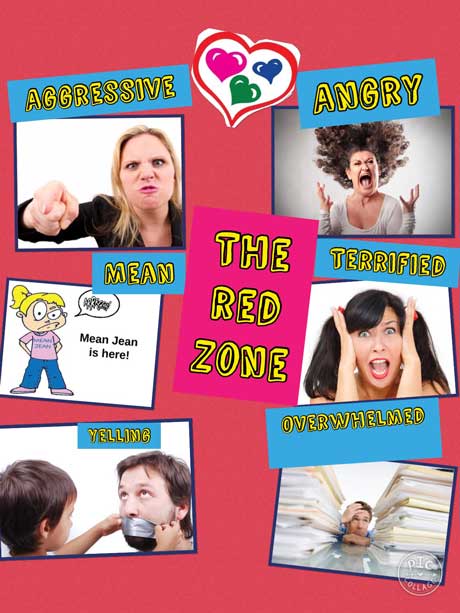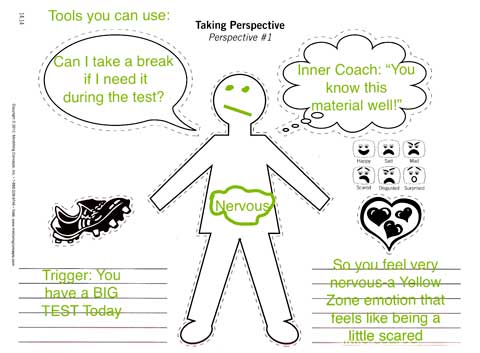Secure Checkout + FREE SHIPPING (U.S. Orders over $60)
Menu
-
- Home
-
About Us
-
The Approach
-
Linking Language & Literacy
-
Professional Learning
-
Learning Resources
-
SHOP
-
Blog
-
- About MindWing
- Our People
- Contact Us
- Your Account
- Login
-
United States (USD $)

Secure Checkout + FREE SHIPPING (U.S. Orders over $60)
Aligning SGM® with The Zones of Regulation, and Tech-Tie-Ins!
by Sean Sweeney December 15, 2015 3 min read 1 Comment
 We’re back for Technology Tuesday, and this month we will discuss the acclaimed Zones of Regulation® program and dovetailing with narrative instruction through Story Grammar Marker®. All students must develop self-regulation skills for living and learning, an area defined by author Leah Kuypers as “the best state of alertness of both the body and emotions for the specific situation” (Kuypers, 2011).
We’re back for Technology Tuesday, and this month we will discuss the acclaimed Zones of Regulation® program and dovetailing with narrative instruction through Story Grammar Marker®. All students must develop self-regulation skills for living and learning, an area defined by author Leah Kuypers as “the best state of alertness of both the body and emotions for the specific situation” (Kuypers, 2011).
However, students with language-learning disorders and autism spectrum and related disorders can exhibit more significant struggles with managing their mind and body given their communication needs, as well as other factors such as sensory processing. The Zones of Regulation provides a curriculum and framework for teaching students to develop these skills and is applicable with modification from preschool all the way to adulthood. As we work with students who may have needs in narrative comprehension and expression as well as self-regulation, it is wonderful to find interventions that have clear crossover points so that we can target both areas at the same time!
In short, The Zones of Regulation® teaches that our body and mind can be in four color-coded zones that are all expected in life: Blue (reduced alertness), Green (optimal alertness), Yellow (heightened alertness but still in control), and Red (intense emotions/out of control). Students learn how feelings align with these zones, for example, Blue Zone emotions include boredom and sadness where the Yellow Zone may manifest as either positive (e.g., excitement, silliness) dysregulation or negative emotions such as annoyance or worry. As the easily implemented curriculum proceeds, students identify Zones in others through the use of video or books, then apply the concepts to themselves as they explore Zones triggers and tools to “stay in the Green Zone.”

Zones is “all about the situation,” and what is a situation but Characters, Setting, the Kick-Off and our Reaction to it? As a result, it is quite easy to implement this program while reinforcing narrative language, and in many ways storytelling is essential to self-regulation as well! Here are some points of complement between the methodologies of Zones and Story Grammar Marker®:
Introducing the Zones
A feelings sorting activity introduces the Zones along with corresponding emotions. SGM®’s feelings icons and visuals around the Six Universal Emotions provide helpful tools to have students explore and define emotions. For example, annoyed (a Yellow Zone emotion) is just “a little angry” (anger being one of the universal six). As students often need additional practice with the skills of labeling and describing emotions, an easy tech-tie-in is the use of Pic Collage (free for iOS and Android), which provides an easy interface for creation of Zones collages with real photos.

Identifying the Zones in Others
Students will require practice observing characters in various situations and identifying the signals of the various zones: body language, voice volume and tone, and behavior. Video is a great tool for this, and students will enjoy selections of all kinds from YouTube or other resources. At the same time, video clips provide an excellent opportunity to map and retell the situation or story and identify the relevant Characters, Settings and Kick-Off events using the SGM® iPad App or story maps. Clips from Peanuts©, Pixar Shorts, TV advertisements or series such as Sesame Street locatable via the YouTube Kids app (iOS and Android) are all great choices to discuss both Zones and narrative structure. Also consider searching Pinterest for Zones of Regulation activities and videos shared by educators using the program.
Tying it all Together
The critical piece of Zones is teaching students to apply it: identifying triggers they experience across the day and tools they can use to stay regulated. The concept of the trigger aligns well with the narrative Kick-Off and with efforts to help students determine the size of problems with tools such as The Incredible 5-Point Scale, which is embedded in the Zones program and which we have written about here previously.
Tools to “get to or stay in the Green Zone” need not be objects but could be action tools (e.g., walking, breathing, jumping) or cognitive tools (self-talk, comparing the size of the current problem to other problems). The alignments with narrative here are best exemplified by MindWing’s “Taking Perspective” activity, contained in Making Connections! (Autism Vol. 2) and MindWing’s Autism Collection.

In this activity, daily situations can be previewed or reviewed both from a narrative and self-regulation perspective, identifying triggers/Kick-Offs, clarifying responses, and selecting helpful reactions or tools, whether they be action- or thought-based tools.
For a final tech-tie-in, see the Zones of Regulation app to reinforce the concepts of the program. A second app with highly contextual activities is coming soon!
Kuypers, L. M., & Winner, M. G. (2011). The zones of regulation: a curriculum designed to foster self-regulation and emotional control. San Jose, CA: Think Social Pub.
Sean Sweeney
Sean Sweeney, MS, MEd, CCC-SLP, is a speech-language pathologist and technology specialist working in private practice at the Ely Center in Needham, MA, and as a clinical supervisor at Boston University. He consults with local and national organizations on technology integration in speech and language interventions. His blog, SpeechTechie (www.speechtechie.com), looks at technology “through a language lens.” Contact him at sean@speechtechie.com.
1 Response
Leave a comment.
Comments will be approved before showing up.

Diane Nesman
May 21, 2016
Once again, you wow your audience with the practical, ingenious ideas. Thank you, Sean!